UPSC Daily Current Affairs- 11th August 2023 | Current Affairs & Hindu Analysis: Daily, Weekly & Monthly PDF Download
GS-I
Mines and Minerals (Development and Regulation) Amendment Bill, 2023
Subject: Geography
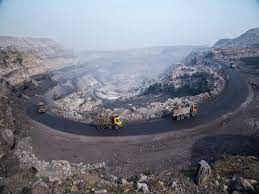
Why in News?
The Parliament has passed the Mines and Minerals (Development and Regulation) Amendment Bill, 2023.
Background:-
- The Bill puts six minerals, including lithium — used in electric vehicle batteries and other energy storage solutions — into a list of “critical and strategic” minerals.
About Mines and Minerals (Development and Regulation) Amendment Bill, 2023: –
- Bill passed: 2023.
- Objective: to attract private sector investment in the exploration of critical and deep-seated minerals in the country.
- Critical Minerals: natural resources that are essential for various industries, including technology, manufacturing, and clean energy.
- Example: Lithium, nickel, cobalt, etc.
- Deep-Seated Minerals: minerals that are found deep within the Earth’s crust and are typically more challenging and costly to explore and mine.
- g., Gold, Copper, Diamonds, etc.
Historical Background:-
- The MMDR Act, of 1957 has undergone several amendments to address various issues in the mineral sector.
- Amendments in 2015: introduced auction-based mineral allocation, established District Mineral Foundation (DMF) for community welfare, and NMET for exploration promotion.
- DMF: As per the Mine and Minerals Development Regulation (Amendment) Act, 2015, in every district affected by mining-related operations, the state government shall, by notification, establish a trust as a non-profit body to be called the District Mineral Foundation.
- Funds every mining lease has to pay a fraction of royalty, not exceeding one-third of the royalty, to the DMF as per rates prescribed by Central Government.
- This fund will be used for welfare of the people affected in the mining affected areas.
- National Mineral Exploration Trust (NMET): NMET is a Trust set up as a non-profit body by the Central Government for the purposes of regional and detailed exploration of minerals using the funds accrued to it and in such manner as prescribed by the Central Government.
- Amendments in 2016, 2020, and 2021: focused on emerging challenges and reforms, including removing the captive vs. merchant mine distinction.
- Need for further Amendment: The mineral sector requires more reforms, particularly in exploring and mining Critical Minerals since the limited availability and extraction concentration of these minerals pose supply chain vulnerabilities and disruptions.
Salient features of Mines and Minerals (Development and Regulation) Amendment Bill, 2023:-
Private Sector to Mine Atomic Minerals:-
- The new bill allows the private sector to mine 6 atomic minerals- lithium, beryllium, niobium, titanium, tantalum, and zirconium.
- The central government can auction mining leases and composite licenses for critical minerals.
Auction for Exploration Licence: –
- The Bill allows the state government to grant licenses through competitive bidding, while the Central government prescribes auction details.
Incentive for Exploration Licence: –
- The Bill allows the state to conduct auctions for mining leases if resources are proven after exploration.
- Licensee receives a share in the auction value of the mining lease for prospected minerals.
Source: The Hindu
Deepor Beel
Subject: Geography
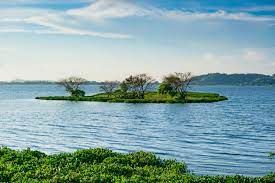
Why in News?
Recent reports show that locals in Assam are taking initiatives to save the dying Deepor Beel Lake.
Background:-
- Some initiatives, along with bettering the health of the beel, have also provided employment to women from the community.
- One such initiative is – Simang, which is a collective initiative by six women from Keotpara has successfully transformed the invasive weed, water hyacinths into beautiful artefacts and yoga mats.
About Deepor Beel:-
- Location: Southwest of Guwahati, Assam.
- it is the erstwhile water channel of River Brahmaputra.
- Area: up to 30 sq. km in summer and about 10 sq. km in the winter.
- The Deepor Beel Wildlife Sanctuary measures 1 sq. km within this wetland (beel).
- Name: ‘Deep’ is an Assamese term for elephants, while the word deepor comes from the Sanskrit word dipa, which means elephants.
- Beel means lake in Assamese.
- Deepor Beel means lake of elephants.
- Deepor Beel is a permanent freshwater lake.
- It was designated a Ramsar site in 2002.
- It is the Assam’s only Ramsar site.
- It has been selected as one of the Important Bird Area (IBA) sites by Birdlife International.
- It has also been a patch for the elephant movement for ages.
Significance:-
- It is considered a vital aspect of Guwahati tourism.
- It provides a means of livelihood for a number of local families.
- It constitutes a unique habitat for aquatic flora and avian fauna.
Fauna:-
- Birds (Avifauna): Deepor Beel is the natural habitat of as many as 219 species of birds that also includes over 70 species of migratory birds.
- Animals: Wild Asian elephants, barking deer, leopards, elephants, sambar, and Chinese porcupine.
- Aquatic animals: it is home to around 12 lizard species, 20 kinds of amphibians, 6 tortoise and turtle species, along with 18 species of snakes.
- Other animals: the wetlands and rivers here are called home by more than 50 species of fish.
Issues:-
- Its water has become toxic and it has lost many of its aquatic plants that elephants would feed on.
- It has for decades been threatened by a railway track — set to be doubled and electrified.
Source: Down to Earth
GS-II
National Social Assistance Programme
Subject: Government Schemes
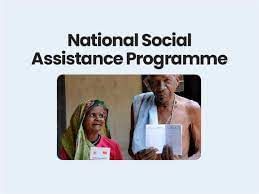
Why in News?
Recently, the Comptroller and Auditor General of India submitted the report on the performance audit of the National Social Assistance Programme from 2017-18 to 2020-21.
About National Social Assistance Programme:
- It was launched on 15th August, 1995.
- Objective
- It is is a social security and welfare programme to provide support to aged persons, widows, disabled persons and bereaved families on death of primary bread winner,
belonging to below poverty line households.
- It is is a social security and welfare programme to provide support to aged persons, widows, disabled persons and bereaved families on death of primary bread winner,
- Eligibility
- For getting benefits under NSAP the applicant must belong to a Below Poverty Line (BPL) family according to the criteria prescribed by the Govt. of India.
- The other eligibility criteria and the scale of central assistance under the sub - schemes of NSAP are as follows
- Presently NSAP comprises of five schemes, namely –
- Indira Gandhi National Old Age Pension Scheme (IGNOAPS): The eligible age for IGNOAPS is 60 years. The pension is Rs.200 p.m. for persons between 60 years and 79 years. For persons who are 80 years and above the pension is Rs.500/ - per month.
- Indira Gandhi National Widow Pension Scheme (IGNWPS): Widow aged 40 years will get pension is Rs.300 per month. After attaining the age of 80 years, the beneficiary will get Rs.500/ - per month.
- Indira Gandhi National Disability Pension Scheme (IGNDPS): An individual aged 18 years and above and the disability level has to be 80% wil get Rs.300 per month and after attaining the age of 80 years, the beneficiary will get Rs 500/ - per month.
- National Family Benefit Scheme NFBS) : In the event of death of the bread – winner Rs. 20000/ - will be given as a lumpsum assistance to the bereaved household. The breadwinner should have been between 18-60 years of age.
- Annapurna: The scheme aims at provide food security to meet the requirements of those eligible old aged persons who have remained uncovered under the IGNOAPS. Under this programme 10 kgs of food grains (wheat or rice) is given per month per beneficiary.
- Nodal Ministry: Ministry of Rural Development
Source: Indian Express
Bill moved to remove CJI from panel to select Election Commissioners
Subject: Polity and Governance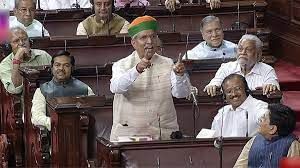
Why in News?
The Chief Election Commissioner and other Election Commissioners (Appointment, Conditions of Service and Term of Office) Bill, 2023, has been introduced by the government in the Rajya Sabha.
- The Bill seeks to remove the Chief Justice of India (CJI) from a panel to select the Chief Election Commissioner and Election Commissioners.
- Earlier, in March 2023, the Supreme Court had ruled that the selection of Chief Election Commissioner and Election Commissioners be done by a three-member committee.
- The committee should comprise the Prime Minister, the Leader of the Opposition in the Lok Sabha and the Chief Justice of India.
About Election Commission of India:
- Election Commission is a permanent and independent body.
- By Article 324 of the Constitution of India, it is vested with the power of conducting elections to –
- Parliament,
- State Legislatures,
- Office of President and Vice-President of India.
Appointment and Tenure of Commissioners:
- The Constitution does not lay down a specific legislative process for the appointment of the Chief Election Commissioner and Election Commissioners.
- Article 324(2) says appointment of CEC and other ECs shall be subject to provisions of any law made by the Parliament.
- However, no such law has been framed so far.
- The President makes the appointment on the advice of the Union Council of Ministers headed by the Prime Minister.
- They have tenure of six years, or up to the age of 65 years, whichever is earlier.
- They enjoy the same status and receive salary and perks as available to Judges of the Supreme Court of India.
- The CEC can be removed from office except in same manner and on the same grounds as a judge of the Supreme Court.
- The Constitution has not debarred the retiring Election Commissioners from any further appointment by the Government.
Composition of Election Commission:
- Since the inceptions and till 15th October 1989, the EC functioned as a single member body consisting of the CEC.
- On 16th October 1989, the President appointed two more commissioners to cope with the increased work of the EC, on account of lowering of the voting age from 21 to 18 years.
- In case of difference of opinion amongst the CEC and/or two other election commissioners, the matter is decided by the Commission by majority.
Supreme Court on Election Commission Appointment
- A five-judge Constitution Bench of the Supreme Court was hearing a bunch of petitions seeking a selection process similar to what is followed in the case of the Director, Central Bureau of Investigation (CBI).
- The Director of CBI is selected by a committee which consists of Prime Minister, Leader of the Single Largest Opposition Party and the Chief Justice of India.
- In March 2023, the Court has unanimously disapproved of the present system of the Centre appointing members of the poll watchdog.
- Pointing to Article 324(2) of the Constitution, the Court has called upon Parliament to make a law regarding the criteria for selection, conditions for service and tenure of the CEC and ECs.
- Until then, the apex court formed a panel of Prime Minister, Chief Justice of India and the leader of opposition to make these appointments.
News Summary: Bill moved to remove CJI from panel to select Election Commissioners
- The Chief Election Commissioner and other Election Commissioners (Appointment, Conditions of Service and Term of Office) Bill, 2023, was introduced by Law Minister in the Rajya Sabha.
Key highlights of the bill
- Removed CJI from the panel
- The bill seeks to replace the Chief Justice of India with a Cabinet Minister nominated by the Prime Minister in the committee for selection of the CECs and ECs.
- It also makes the Leader of Opposition in Lok Sabha a member of the selection committee.
- Criteria
- The bill says the ECI will consist of a CEC and other ECs from among people:
- who hold or have held the post equivalent to Secretary to the Government of India; and
- shall be persons of integrity, who have knowledge of and experience in management and conduct of elections.
- The bill says the ECI will consist of a CEC and other ECs from among people:
- Process
- First, a Search Committee, headed by the Cabinet Secretary and including two members not below the rank of Secretary, having knowledge and experience in matters relating to elections, shall prepare a panel of five persons.
- This will then be sent to the Selection Committee.
- The selection committee will be chaired by the PM and will include the Leader of Opposition or leader of the single largest Opposition party in Lok Sabha and a Cabinet Minister nominated by the Prime Minister.
- The Selection Committee may consider any other person apart from those included in the Search Committee’s panel.
- Terms & tenure
- The terms of the CEC and ECs remain unchanged, at six years or until they reach the age of 65 years, whichever is earlier.
- The Bill says the salary of the CEC and ECs would be equivalent to the Cabinet Secretary.
- As of now their salary as per the Election Commission (Conditions of Service of Election Commissioners and Transaction of Business) Act, 1991, is equated with a Supreme Court judge.
- The amount, however, is the same.
- Repeals the Election Commission (Conditions of Service of Election Commissioners and Transaction of Business) Act, 1991
- The bill repeals the Election Commission (Conditions of Service of Election Commissioners and Transaction of Business) Act, 1991.
- Business of the ECI was guided through this act.
- The Bill says that the business of the EC should, as far as possible, be transacted unanimously and if there is a difference of opinion, the majority’s opinion will prevail.
- The bill repeals the Election Commission (Conditions of Service of Election Commissioners and Transaction of Business) Act, 1991.
Debating the Abolition of Judicial Vacations
Subject: Polity and Governance '
'
Why in News?
The longstanding tradition of judicial vacations in India has come under scrutiny as a parliamentary committee.
- The 133rd report on judicial processes and reforms was released by the parliamentary panel chaired by Sushil Kumar Modi.
Vacation in Judiciary
- Judicial Workdays: The Supreme Court has 193 working days annually, High Courts function around 210 days, and trial courts operate for 245 days. High Courts possess the authority to structure their calendars as per service rules.
- Long-standing Practice: The practice of vacations, particularly the extensive 7-week (formerly 10-week) summer recess, has its origins in colonial times.
Understanding Vacation Benches
- Composition and Role: The CJI appoints a Vacation Bench, a specialized court that operates during the Supreme Court’s summer and winter breaks. Although the court is not fully closed during vacations, this bench handles cases deemed “urgent matters.”
- Urgent Cases: While there is no explicit definition for “urgent matters,” the Vacation Bench typically entertains writs associated with habeas corpus, certiorari, prohibition, and quo warranto, all related to enforcing fundamental rights.
- Rule 6 of Order II of the Supreme Court Rules, 2013: Under this rule, the CJI nominates Division Benches for urgent miscellaneous and regular hearing matters during the summer vacation period. The rule allows for the appointment of judges to hear urgent cases individually or in a Division Court.
Historical Significance and Notable Cases:
- Impactful Decisions: Vacation Benches have delivered significant judgments in the past. A well-known instance is when a Vacation Bench Judge refused PM Indira Gandhi’s plea to stay an Allahabad High Court decision in 1975, which led to the Emergency declaration.
- Triple Talaq Case: In 2017, a Vacation Bench of the Supreme Court heard the triple talaq case during vacation days.
Debates and Arguments Surrounding Vacation Benches
[A] Arguments in Favor:
- Judicial Rejuvenation: Advocates emphasize the need for vacation periods to provide judges with mental and physical rejuvenation.
- Extended Work Hours: Considering the demanding nature of judicial work, proponents assert that the long working hours necessitate periodic breaks.
- Writing Judgments: Judges use vacation time to draft judgments, contributing to the timely disposal of cases.
[B] Arguments Against:
- Pendency and Delays: Critics argue that the extended and frequent vacations exacerbate the backlog of cases and contribute to the slow pace of justice delivery.
- Inconvenience to Litigants: For litigants, vacations translate to additional delays in case hearings.
Calls for Reform
- Malimath Committee (2000): The committee proposed reducing vacation periods by 21 days, advocating for the Supreme Court to operate for 206 days and High Courts for 231 days annually.
- Law Commission of India (2009): The commission recommended curtailing vacations by 10-15 days and extending court working hours to address the substantial backlog of cases.
- Supreme Court’s 2014 Rule Change: The Supreme Court truncated the summer vacation period from 10 weeks to seven weeks.
- RM Lodha Commission (2014): It suggested that individual judges should take leave at different times throughout the year instead of having all judges on vacation at once.
Proposed Approach and Suggested Changes
- Continuous Operation: The 133rd committee supports the notion that individual judges should take their leave at different intervals, thereby ensuring that the courts remain open throughout the year.
- Redefined Judicial Vacations: The parliamentary report calls for a reevaluation of the traditional concept of vacations, advocating for a more modern and efficient approach to court operation.
- Comparison with Other Countries: The report suggests that the vacation practices of the Supreme Court and High Courts should be reviewed in comparison to other countries’ higher courts and constitutional institutions.
Conclusion
- The debate surrounding the abolition of judicial vacations in India emphasizes the necessity for a dynamic and effective approach to court operations.
- While the tradition has historical significance, the current judicial landscape calls for a re-evaluation of practices to ensure efficient functioning, address the backlog of cases, and minimize inconveniences to litigants.
Source: Indian Express
GS-III
Handloom Sector in India
Subject: Economics
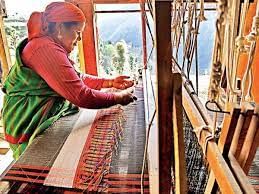
Why in News?
PM Modi recently addressed the ninth National Handloom Day in Delhi in order to promote India’s rich heritage of handloom.
- The theme of the National Handloom Day 2023 is “Handlooms for Sustainable Fashion”, focusing on the sustainable and environmentally beneficial alternative to machine-made fabrics.
Handloom Sector in India
- The greatest cottage industry in the nation is the handloom industry.
- It is the second biggest employer in the rural area.
- A total of 35, 22,512-handloom workers were employed nationwide as per Handloom Census 2019–20.
- Women make up the majority of the workforce in this sector, accounting for 72.29% of all handloom employees.
- Production of hand-woven fabric from India constitutes 95 per cent of the global production.
Significance of the sector:
- Women empowerment: Apart from being a significant employment source in rural areas, the handloom sector is also a key player in the field of women empowerment as roughly 70 percent of all weavers and allied workers are women.
- Exports: The Indian handloom sector exports its products to more than 20 countries across the globe, including the USA, the UK, Germany, France, and South Africa.
- Handloom weaving community: The National Handloom Day is celebrated to honour the handloom weaving community and to highlight the contribution of the community in various sectors of the country, including rural employment.
- Protection of India’s rich handloom heritage: The day also stands for the protection of India’s rich handloom heritage and to empower the handloom community with bigger and better opportunities.
Problems in the industry:
- The lack of effective policy support: Combined with the fragmented nature of the sector has given rise to many problems.
- Weaver and supply chain problems: Most of the problems concerning the sector can be broadly categorised into weaver and supply chain problems.
- Lack of financial viability: According to the Handloom Census, approximately 67 per cent of the weavers still earn less than 5,000 a month, which is less than the amount that an unskilled worker earns as per the minimum wage rule.
- Handing the tradition over: Existing weavers are not showing an interest in handing the tradition over to their next generations.
- Indirect sources of credit: Most of the weavers depend on indirect sources of credit with high rates of interest. This is due to the low penetration of banking facilities among the weaver community.
- Fewer profits: The price fluctuations in the open market eat up the profit margins of the weavers.
Govt. Schemes for Handloom Sector
- Handloom Weavers’ Comprehensive Welfare Scheme: Weavers Comprehensive Welfare Scheme (HWCWS) is providing life, accidental and disability insurance coverage under the components
- Pradhan Mantri Mudra Yojana (PMMY): In order to support operations, the initiative provides small businesses with loans upto Rs. 10 lakhs.
- The National Handloom Development Programme (NHDP) aims to provide handloom weavers with financial assistance so they can advance their technology, market their products, and nurture their abilities.
- Micro and small businesses’ Credit Guarantee Fund Trust (CGTMSE): This initiative intends to provide operating cash and term loans to micro and small businesses without the need for collateral.
- The Yarn Supply Scheme: With partial modification, it is renamed as Raw Material Supply Scheme (RMSS) and has been approved for implementation during the period from 2021-22 to 2025-26.
Way Forward:
National Handloom Day serves as a reminder of the invaluable contribution of the handloom sector to India’s cultural heritage and rural livelihoods. The Government of India’s interventions play a crucial role in supporting and empowering handloom weavers and allied workers. By continuing to invest in skill development, infrastructure, and marketing opportunities, India can preserve its handloom heritage while ensuring a sustainable and prosperous future for the weaver community.
Source: Indian Express
NCLT clears Zee-Sony deal, paves way for creation of $10-billion entertainment giant
Subject: Economics

Why in News?
The National Company Law Tribunal approved the merger of Zee Entertainment Enterprises with Culver Max Entertainment (formerly Sony Pictures Networks India).
- This clears the decks for the creation of the country’s largest media company.
- This could be the final approval needed for the merger, unless some of the creditors decide to move the National Company Law Appellate Tribunal (NCLAT).
National Company Law Appellate Tribunal (NCLAT)
- About
- NCLAT is a quasi-judicial body in India that was established under the Companies Act, 2013 to hear appeals against the orders passed by the National Company Law Tribunal (NCLT).
- Established in 2016, it is headquartered in New Delhi.
- It is the second-highest forum for company law cases in India after the Supreme Court.
- The decisions of the NCLAT are final and binding on the parties involved, and the orders passed by the NCLAT can be challenged only in the Supreme Court of India.
- Functions
- The NCLAT is empowered to hear appeals against orders passed by the NCLT related to insolvency and bankruptcy, merger and acquisition, and company law matters.
- It is also the Appellate Tribunal for order passed by the Competition Commission of India (CCI) as well for orders of the National Financial Reporting Authority.
- Composition
- The NCLAT is headed by a Chairperson and consists of judicial and technical members who are appointed by the Central Government.
National Company Law Tribunal
- About
- NCLT is a quasi-judicial authority incorporated for dealing with corporate disputes that are of civil nature arising under the Companies Act.
- Its bench is chaired by a Judicial member who is supposed to be a retired or a serving HC Judge and a Technical member who must be from the Indian Corporate Law Service.
- The primary function of the NCLT is to adjudicate on matters related to corporate law, including disputes between companies and their stakeholders, as well as insolvency and bankruptcy cases.
- Functions
- Disposal of all proceedings under the Companies Act such as arbitration, arrangements, compromise, reconstruction, and winding up of the company;
- Adjudicating Authority for insolvency proceedings under the Insolvency and Bankruptcy Code, 2016;
- Possess the authority to dispose of cases pending before the Board for Industrial and Financial Reconstruction (BIFR), as well as, those pending under the Sick Industrial Companies (Special Provisions) Act, 1985.
- Can take cases pending before the Appellate Authority for Industrial and Financial Reconstruction.
Background: Sony-Zee Merger
- Merger process initiated
- In 2021, Sony Pictures Networks India and ZEEL entered into a non-binding term sheet to bring together their linear networks, digital assets, production operations, etc.
- As per the scheme of the arrangement, Sony will indirectly hold 50.86% of the combined company.
- The founder of Zee will own around 4% and the rest will be with the other shareholders of ZEEL.
- Apart from the BSE and NSE approval and the Competition Commission of India’s nod, the shareholders of Zee had already given their assent to the merger.
- The NCLT order and challenge
- The NCLT had directed NSE and BSE to reconsider their prior approvals for the merger of ZEEL and Culver Max Entertainment.
- The NCLT order was challenged by ZEEL before the appellate tribunal, contending that it was not granted adequate opportunity by the NCLT to present its side.
- It also contended that the NCLT doesn’t have jurisdiction over non-compete issues.
- In May 2023, the NCLAT set aside the NCLT order that had directed the NSE and BSE to reconsider their approval for the Zee-Sony merger.
News Summary:
- NCLT allowed the merger of Zee Entertainment Enterprises Ltd and Culver Max Entertainment. The tribunal also dismissed all objections regarding the merger.
Market scenario after the merger
- The deal would result in creating the country’s largest media and entertainment company with standalone revenues of $2 billion.
- The merger, would create a $10-billion media giant, with the combined entity owning:
- over 70 TV channels,
- two video streaming services (Zee5 and SonyLiv) and
- two film studios (Zee Studios and Sony Pictures Films India).
- It would be the country’s largest TV network company with a 26% market share.
Source: Indian Express
Compulsorily Convertible Debentures
Subject: Economy
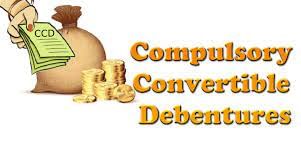
Why in News?
Foreign investors from Mauritius, Cyprus and Singapore have been on the receiving end of a number of notices for gains from investment in compulsorily convertible debentures (CCDs) issued by Indian companies.
About Compulsorily Convertible Debentures:
- It is a type of bond which must be converted into stock by a specified date.
- It is classified as a hybrid security, as it is neither purely a bond nor purely a stock.
- A debenture comes in two forms
- Non-convertible debenture: It cannot be converted into equity shares of the issuing company. Instead, debenture holders receive periodic interest payments and get back their principal at the maturity date, just like most bondholders.
- The interest rate attached to them is higher than for convertible debentures.
- Convertible debentures: May be converted into the company’s equity after a set period of time. That convertibility is a perceived advantage, so investors are willing to accept a lower interest rate for purchasing convertible debentures.
What is a debenture?
- A debenture is a medium- to long-term debt security issued by a company as a means of borrowing money at a fixed interest rate.
- Unlike most investment-grade corporate bonds, it is not secured by collateral.
- It is backed only by the full faith and credit of the issuing company.
|
44 videos|5283 docs|1115 tests
|





















